We all know how much plastic has affected the environment.
Now, an explorer has discovered that plastic has even reached the seabed of the Mariana Trench, the deepest place on earth.
Damn deep
Victor Vescovo, an American explorer, descended 10,927 metres into the Pacific Ocean's Mariana Trench, hitting the seabed.
The Mariana Trench is the deepest natural trench in the world. It is shaped like a crescent and averages about 2,550km long and 69km wide.
Which means if Mount Everest, the tallest mountain on earth, was dropped into the trench, its peak would still be two kilometres underwater.
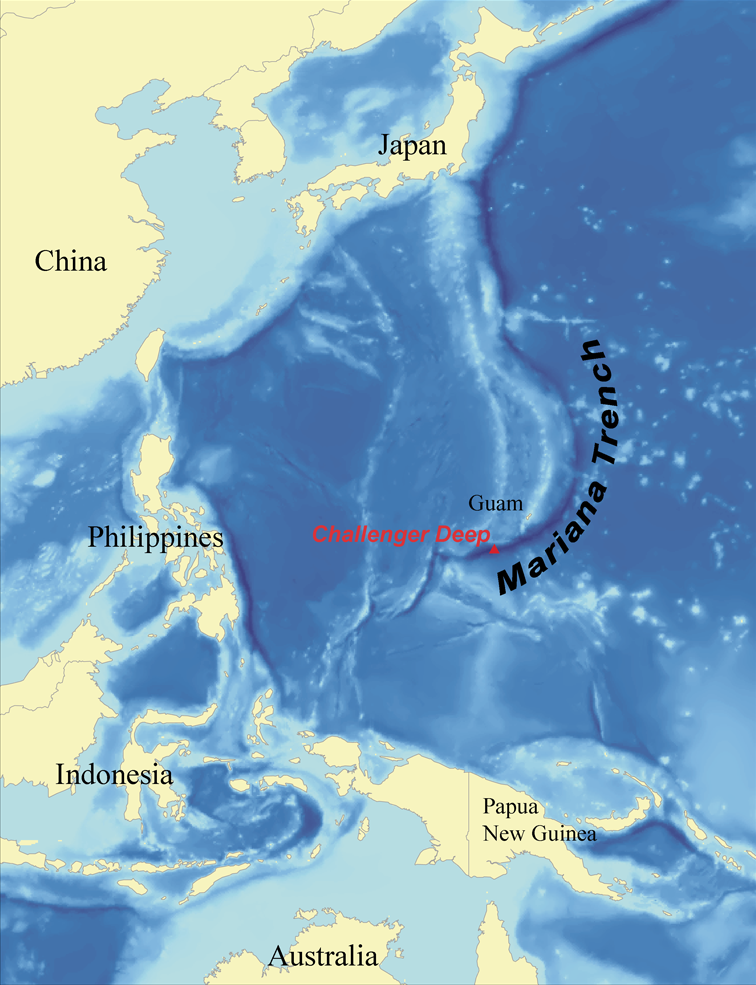 Photo from Wikipedia
Photo from Wikipedia
Record-breaking dive
In this recent dive, Vescovo actually broke the record for the deepest ever manned submarine dive, the details of which were released on May 13, 2019.
His dive went 16m lower than the previous record-breaking dive into the trench in 1960, according to The Guardian.
This is only the third time humans have travelled to the ocean's extreme depths.
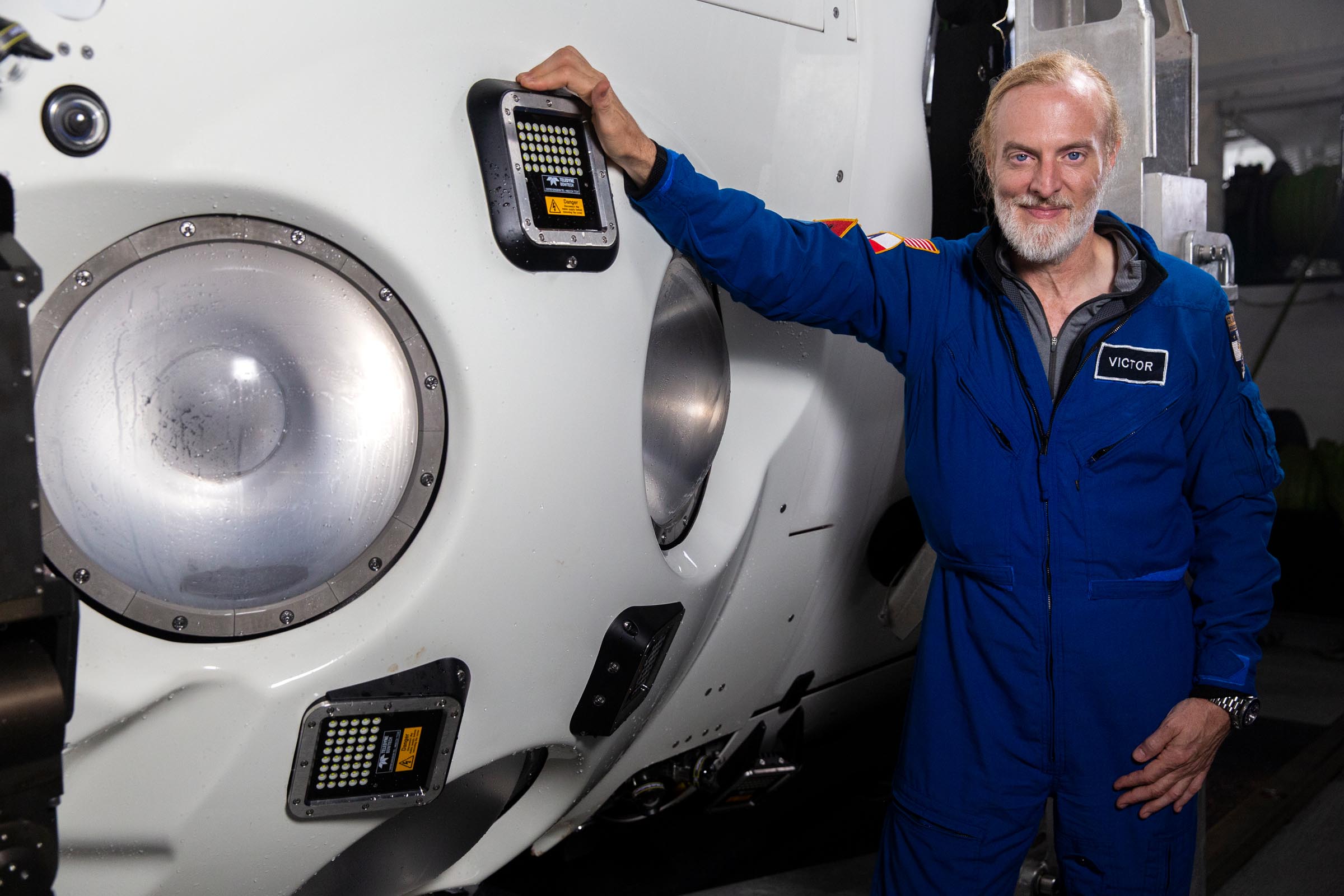 Vescovo beside his submarine. Photo from fivedeeps.com
Vescovo beside his submarine. Photo from fivedeeps.com
His dive is part of a series of five expeditions collectively dubbed the Five Deeps Expedition.
The expedition's mission is to document the deepest spots in each of earth's five oceans via sonar mapping.
Currently, four out of five expeditions have been completed, with the last expedition scheduled for August 2019 in the Arctic ocean.
Finding cool creatures
Vescovo's 4.6m-long, 3.7m-high submarine was specially equipped to withstand the intense pressures of the deep.
It's 9cm-thick titanium pressure hull could resist 1,000 bars of pressure, equivalent to 50 jumbo jets piled on top of a person.
The ex-naval officer and his team spent four hours exploring the depths in his submarine, uncovering interesting-looking deep sea creatures.
Sea cucumbers, snailfishes and spoon worms were just some of the creatures Vescovo and his team spotted.
They are also believed to have discovered four new species of amphipods, small prawn-like crustaceans.
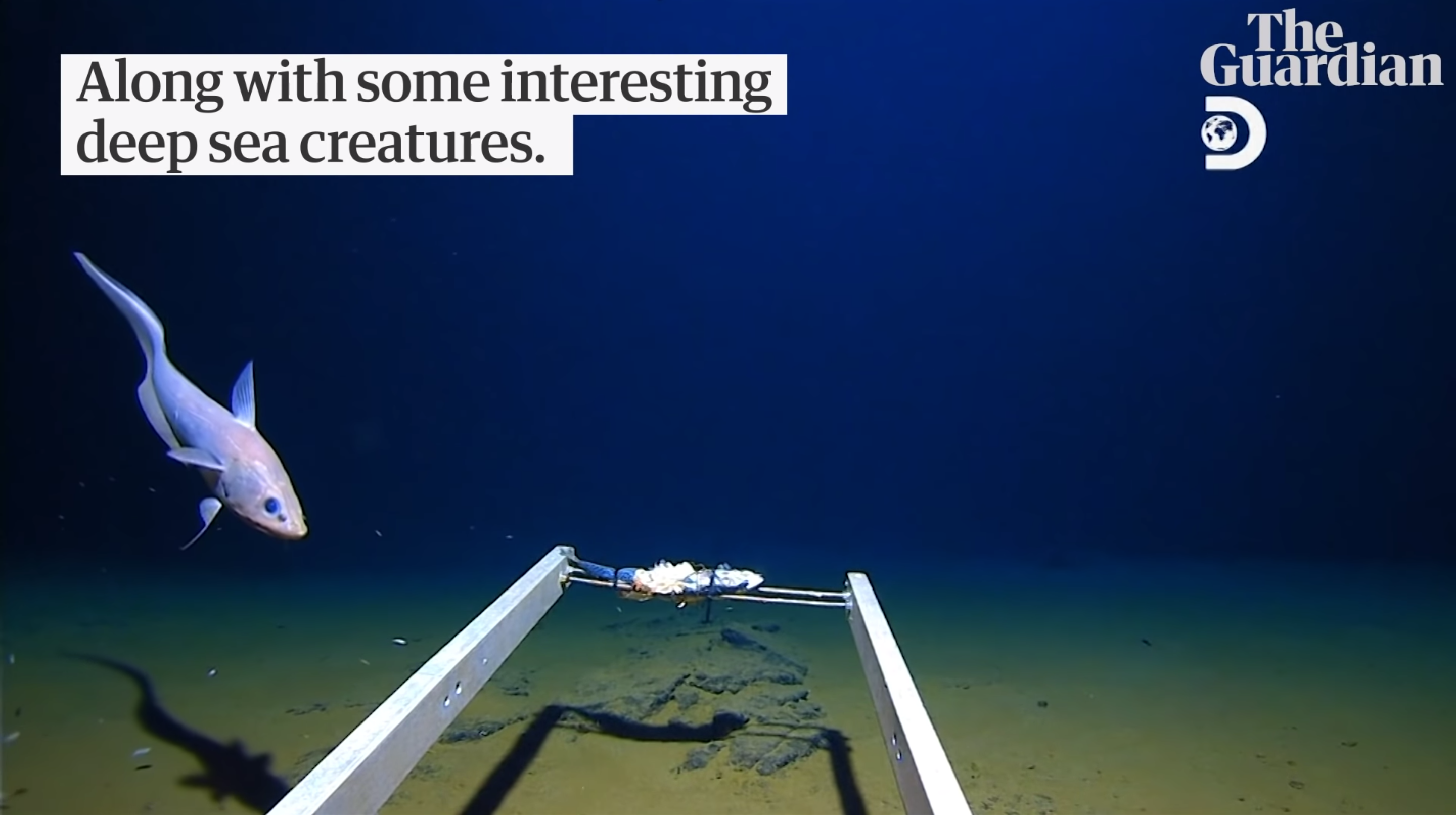 Photo from Guardian News / Youtube
Photo from Guardian News / Youtube
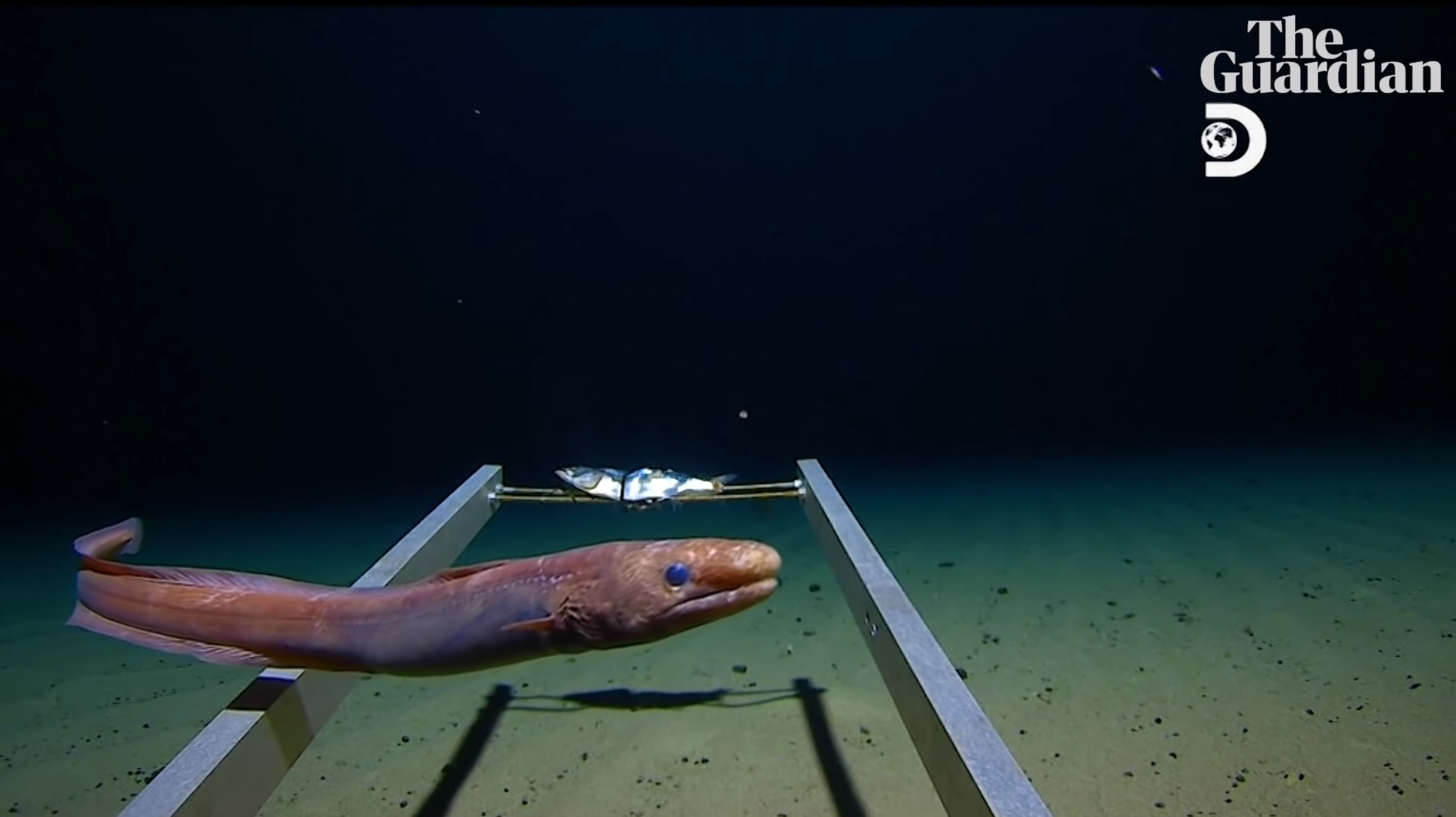 Photo from Guardian News / Youtube
Photo from Guardian News / Youtube
And plastic trash too...
However, aside from some cool never-before-seen creatures, Vescovo also found trash at the deepest point on the planet—in the form of a plastic bag and candy wrappers, reported BBC.
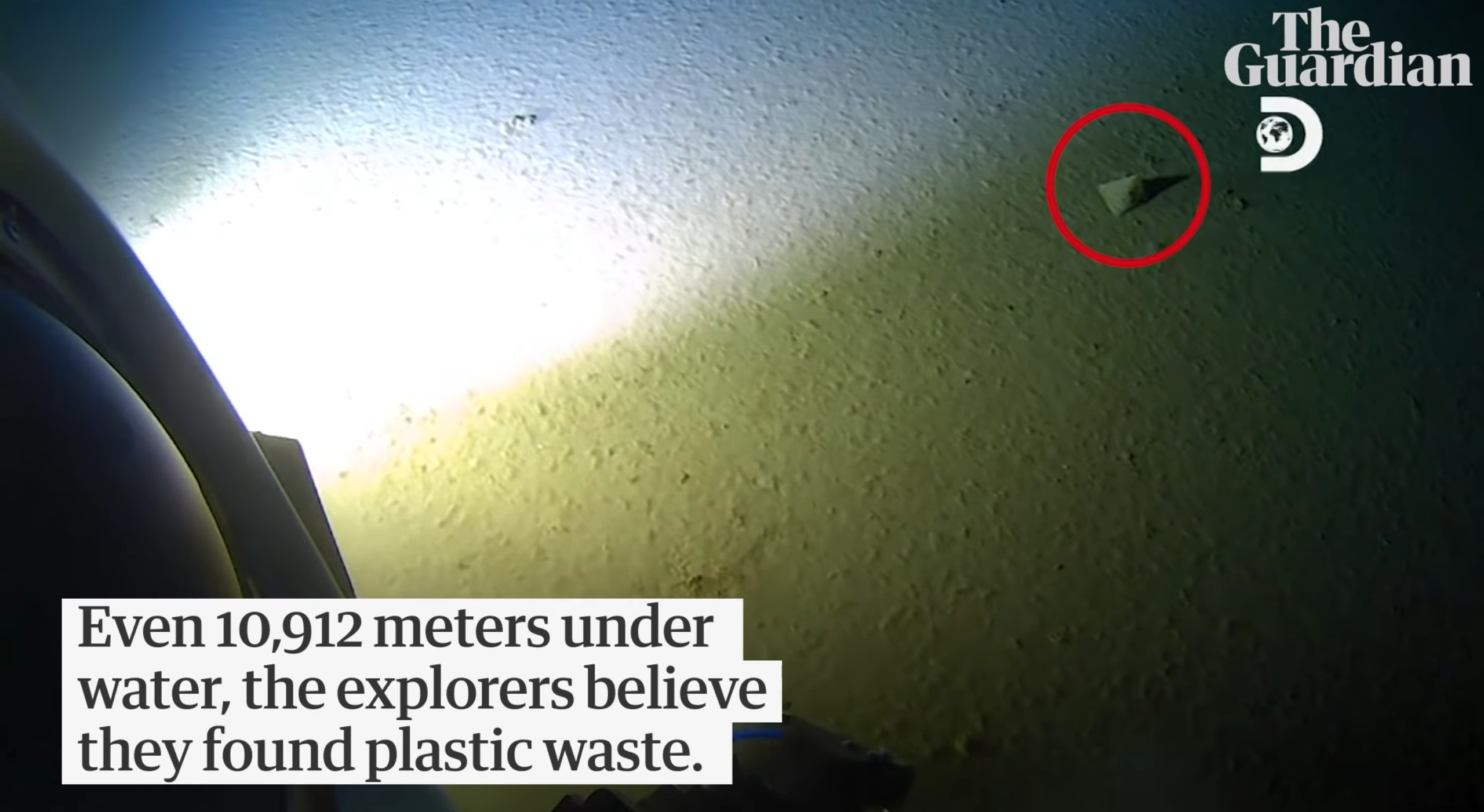 Photo from Guardian News / Youtube
Photo from Guardian News / Youtube
The team and its scientists plan to test the marine creatures collected from the expedition for microplastics.
Recently in February 2019, headlines were made when scientists discovered that 80 per cent of amphipods they had captured from the deepest ocean trenches contained plastic fibres and particles in their guts.
Really goes to show how pervasive plastics are.
With this revelation, Vescovo hopes that greater awareness could be raised about dumping trash in oceans and other waterways.
He also hopes that this incident could pressure governments to enforce more stringent regulations protecting the marine environment from pollution, or reinforce current ones.
"It's not a big garbage collection pool, even though it's treated as such."
Top photo screenshotted from Guardian News / Youtube and Fivedeeps.com
If you like what you read, follow us on Facebook, Instagram, Twitter and Telegram to get the latest updates.
